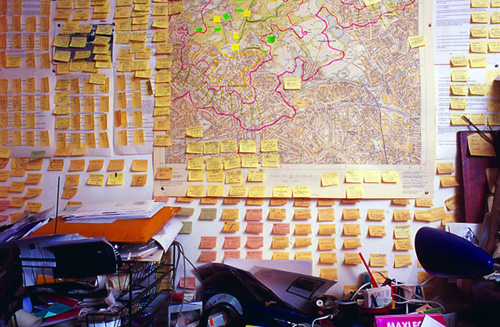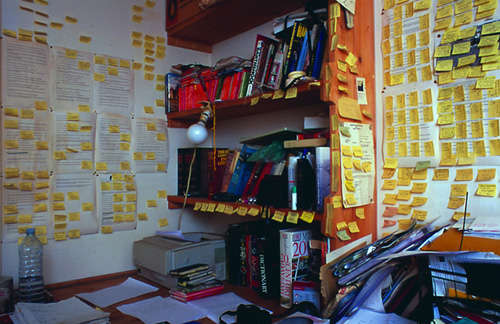Temple of Post-Its
The writing room of author Will Self (Wikipedia), where he organizes his complicated stories through copious use of small yellow (and pink) adhesive papers on the wall:
Or amongst a map and more papers:
Not even the bookshelf is safe:
Check out the whole collection.
Reminds me of taking all the pages of my Ph.D. dissertation (a hundred or so) and organizing them on the floor of a friend’s living room. (Luckily it was a large living room.) It was extremely helpful and productive but frightened my friend who returned home to a sea of paper and a guy who had been indoors all day sitting in the middle of it with a slightly wild look in his eyes.
(Thanks to Jason Leigh, who mentioned the photos during his lecture at last week’s iCore summit in Banff.)




